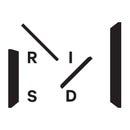Introduction: Making Iron Gall Ink
This Instructable is part of a project I completed for the RISD Museum, for which I copied Luca Cambiaso’s drawing Deposition from the Cross (ca. 1570). This lesson is paired with a secondary article on how to make a quill pen.
Iron gall ink contains three ingredients, plus water: oak galls, ferrous sulphate, and gum arabic. I used a 1770 recipe that calls for two ounces of crushed oak galls soaked overnight in one pint of water, then strained into one ounce of ferrous sulphate. One-half ounce of gum arabic is added, and the mixture stirred until it is dissolved.
You can also read an article I wrote discussing my process for copying Luca Cambiaso 1570 drawing using iron gall ink.
Written by Andrew Raftery (RISD faculty, Printmaking)
Step 1: Harvesting and Drying Oak Gall
Oak galls grow when a gall wasp lays an egg into a puncture on the underside of an oak leaf. As the larva develops, the tree secretes tannic and gallic acids, creating a round formation known as a gall nut or oak apple. These are harvested and dried. The hole from which the wasp emerged is clearly visible on each gall nut. I harvested live oak galls during the New England spring.
Step 2: Crushing Oak Gall
After drying, crush oak galls with mortar and pestle. You will need two ounces of crushed oak galls.
Step 3: Soaking Oak Gall
Pour one pint of water onto crushed oak galls. After soaking for 24 hours straining oak gall/water mixture through cheesecloth.
Step 4: Adding Ferrous Sulphate
Ferrous sulphate, historically known as vitriol or copperas, is produced by passing iron through a bath of sulfuric acid. The resulting green crystals are used to make ink.
Measure one ounce of ferrous sulphate on scale. Add ferrous sulphate to oak gall solution.
Step 5: Adding Gum Arabic
Iron gall ink, five seconds later. Gum Arabic can be added at this point. Gum Arabic—dried sap from the gum acacia tree—has extensive use as an art material, especially as the binder for watercolor and gouache. As an ingredient in iron gall ink, gum arabic adds brilliancy and substance.













